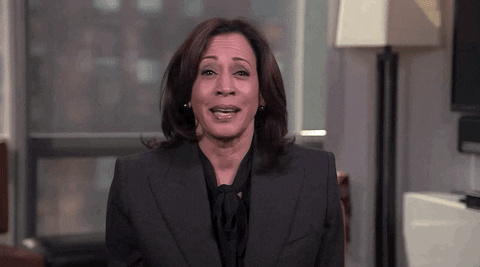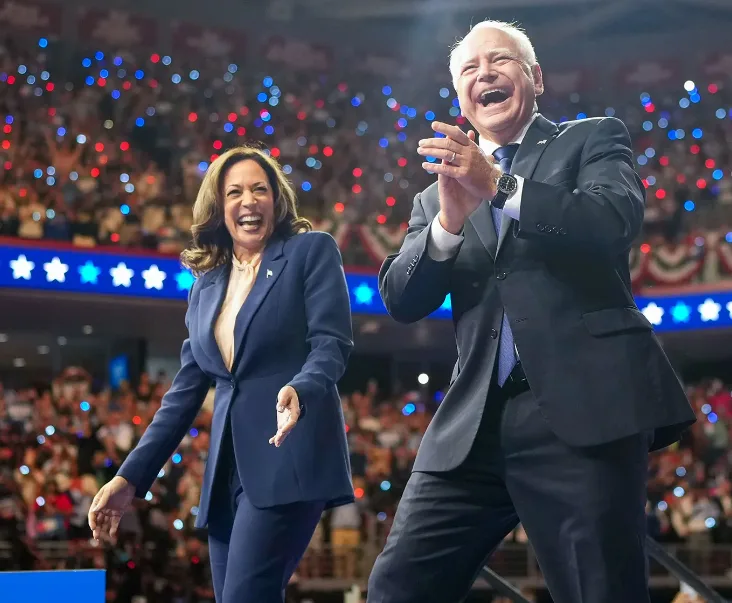Table of contents
In today’s rapidly evolving world, pursuing a sustainable future is more crucial than ever. As we approach the 2024 election, the climate policies of Kamala Harris and Donald Trump offer profoundly different visions for America’s energy future. She champions green energy and clean initiatives to advance sustainability and combat climate change. Meanwhile, Trump’s 2025 plan heavily relies on traditional energy resources, raising concerns about long-term environmental impacts. In this analysis, we will delve into the essence of each approach, examining how they align with the aspirations of ecological activists, policymakers, and advocates for a greener planet.
Kamala Harris’s Climate Policy
Record of Support for Renewable Energy
Kamala Harris has consistently steadfastly committed to renewable and clean energy initiatives. As a senator, she co-sponsored the Green New Deal, an ambitious proposal to address climate change through sustainable energy practices. Harris’s climate policy focuses on expediting the transition to clean energy sources, such as solar and wind power while ensuring that these initiatives generate jobs and stimulate economic growth. Her sustainability plans aim to cut carbon emissions and build infrastructure resilient to climate change. By championing significant investments in green initiatives, Harris seeks to make renewable energy accessible to all communities, emphasizing environmental justice. Her approach resonates with environmental activists and policymakers eager for America to assume leadership in the global effort against climate change.


Critical Components of Her Plan
Several vital components underpin Kamala Harris’s climate policy to promote sustainability. First, she advocates for substantial investments in renewable energy infrastructure, expanding solar and wind projects. This approach supports clean energy and promises thousands of jobs in emerging green sectors. A critical aspect of her plan is to achieve net-zero carbon emissions by 2050, which aligns with global climate goals.
Harris also prioritizes environmental justice by ensuring clean energy advancements benefit marginalized communities, often the most affected by pollution. Furthermore, her plan proposes stricter regulations on vehicle emissions and supports the electrification of transportation systems. By encouraging innovation in sustainable technologies, Harris aims to position the U.S. as a leader in global energy policy. Her comprehensive vision addresses the environmental and economic challenges of transitioning to a greener future.


Impact on Sustainability Efforts
Kamala Harris’s climate policy has the potential to significantly advance sustainability efforts across the United States. By prioritizing renewable and clean energy initiatives, her plan aims to drastically reduce reliance on fossil fuels, lowering greenhouse gas emissions. This transition is critical in mitigating the adverse effects of climate change, like extreme weather and rising sea levels. Moreover, Harris’s focus on environmental justice ensures all communities benefit from a cleaner environment, particularly those historically burdened by pollution. The policy’s emphasis on innovation and green technology can fuel economic growth, creating jobs while promoting sustainable practices. By setting ambitious targets for emission reductions and fostering green initiatives, Harris’s plan could inspire global action, establishing the U.S. as a leader in climate policy. Ultimately, her approach supports current sustainability efforts and lays the groundwork for a more sustainable future.
Trump’s Energy Plan
Overview of Trump’s 2025 Plan
Donald Trump’s 2025 energy plan largely centers on boosting traditional energy sources such as coal, oil, and methane. It reflects his administration’s prior focus on achieving energy independence through increased domestic production. Trump contends that these resources are essential for maintaining economic stability and ensuring national security. His plan proposes to reduce regulations perceived as burdensome to energy industries. Instead, he aims to enhance job creation and reduce energy costs.
However, this approach raises concerns about its environmental impact, as it may lead to increased carbon emissions and impede progress toward sustainability. Critics argue that Trump’s energy policy could delay the transition to renewable energy, risking long-term ecological harm. While his plan prioritizes immediate economic gains, it contrasts with the global emphasis on clean energy and climate change mitigation. As such, Trump’s vision represents a continuation of traditional energy policies rather than a shift toward sustainability.


Focus on Fossil Fuels
Trump’s 2025 energy plan emphasizes a robust reliance on fossil fuels. He views them as crucial for America’s energy independence and economic strength. The plan advocates for expanding oil drilling, coal mining, and methane extraction, positing that these industries provide numerous jobs and significantly contribute to the nation’s GDP. This shows that Trump believes tapping into these resources will lower consumer energy costs and reduce dependence on foreign oil. However, this focus on fossil fuels raises significant environmental concerns. Increased fossil fuel production can increase greenhouse gas emissions, exacerbating climate change.
Moreover, reliance on these finite resources may delay investment in renewable energy, potentially hindering long-term sustainability efforts. Subsequently, many critics worry that this approach prioritizes short-term economic benefits over planetary health. While Trump’s plan aims to capitalize on existing energy resources, it also faces opposition from advocates for a more sustainable energy future.
Environmental Consequences
The Trump 2025 energy plan’s focus on fossil fuels poses several potential environmental consequences. This approach could significantly increase carbon emissions by prioritizing coal, oil, and methane, contributing to global warming and climate change. Fossil fuel extraction and consumption are significant sources of air and water pollution, posing risks to ecosystems and public health.
Moreover, continued investment in these non-renewable resources may hinder the development and adoption of renewable energy technologies, delaying the transition to a more sustainable energy system. This reliance on fossil fuels could also exacerbate environmental degradation, such as habitat destruction and oil spills. Critics argue that Trump’s energy plan may undermine efforts to combat climate change and achieve sustainability goals. The plan seeks to bolster economic growth and energy independence. However, it does so at the potential cost of future environmental health and the global push for clean energy. Read more about how Project 2025 would jeopardize Global climate change action here.
Comparing the Two Approaches
Renewable Energy vs. Fossil Fuels
The debate between renewable energy and fossil fuels lies at the heart of the climate policy divide between Kamala Harris’ climate policy and Donald Trump’s Project 2025 plan. Harris’s approach prioritizes renewable energy, focusing on sustainable practices that reduce carbon emissions and promote environmental health. This transition to clean energy sources aims to create a sustainable future while offering economic opportunities through job creation in new sectors.
In contrast, Trump’s energy plan emphasizes the expansion of fossil fuels, citing their role in supporting financial stability and energy independence. While this approach may provide immediate economic benefits, it poses significant environmental risks, including increased emissions and pollution. The renewable energy strategy champions long-term sustainability and resilience against climate change. Meanwhile, the fossil fuel approach prioritizes short-term economic gains. Understanding these differences is crucial for voters concerned about each policy’s environmental and economic impacts.


Long-term Sustainability
Long-term sustainability is a crucial factor distinguishing the climate policies of Kamala Harris and Donald Trump. Harris’s emphasis on renewable energy underscores a commitment to reducing carbon footprints and building resilient infrastructure for future generations. Her approach ensures that economic growth aligns with environmental health, fostering a circular economy that values sustainability. This vision includes investing in green technology and clean energy projects that promise ecological benefits and economic vitality by creating new industries and jobs.


Conversely, Trump’s focus on fossil fuels may offer short-term financial benefits but jeopardizes long-term sustainability. Continued reliance on these non-renewable resources risks exacerbating climate change and delaying transitions to cleaner energy systems. For those concerned with the planet’s future health and its resources, Harris’s policy presents a path toward a sustainable energy landscape that balances ecological responsibility with economic progress.
Policy Implications for 2024 Elections
As the 2024 elections draw near, the contrasting energy policies of Kamala Harris and Donald Trump carry significant implications for voters. Harris’s focus on renewable energy and sustainability appeals to environmentally conscious individuals, policymakers, and young voters who prioritize climate action. Her policy envisions a future where clean energy is central to economic and environmental health.
On the other hand, Trump’s plan to expand fossil fuel production may resonate with voters concerned about immediate job creation in traditional energy sectors and lower energy costs. However, it poses risks to long-term environmental stability. The choice between these two approaches transcends energy policy—it reflects differing visions for America’s role in addressing global climate challenges. Voters must consider whether they prioritize the urgency of climate action and sustainability or the economic benefits of traditional energy. These decisions will shape national energy policy and global environmental strategies.


Vote For Kamala Harris’ Climate Policy
Supporting Kamala Harris’s climate policy in the 2024 election means advocating for a future built on clean energy and sustainability. Her commitment to renewable energy initiatives is crucial for addressing climate change and ensuring long-term environmental health. By investing in green technology and clean energy infrastructure, Harris aims to create jobs and drive economic growth while reducing carbon emissions. Her policies prioritize environmental justice, ensuring that all communities benefit from a cleaner, healthier environment.
Voting for Harris signifies supporting a vision where the United States leads globally in sustainable practices and climate action. Your vote is a powerful tool for shaping a future where economic progress aligns with ecological responsibility. By choosing Harris, you stand for a greener planet and a sustainable future. Let’s take action for clean energy progress—your vote matters now more than ever. Join the movement to prioritize our planet and secure a better future for generations to come.


Conclusion
Make your voice heard in the upcoming election by ensuring you’re ready to vote. Visit vote.gov to check your voter registration status and make any necessary updates. Consider participating in early voting to guarantee your vote is counted, or mark your calendar for November 5th to cast your ballot. Every vote counts in shaping our energy future—be part of the movement for change and sustainability. Your vote is vital—stand up and let everyone know you support Harris’ Climate Policy! Also, please consider checking out some of my other blog posts below:




Leave a Reply